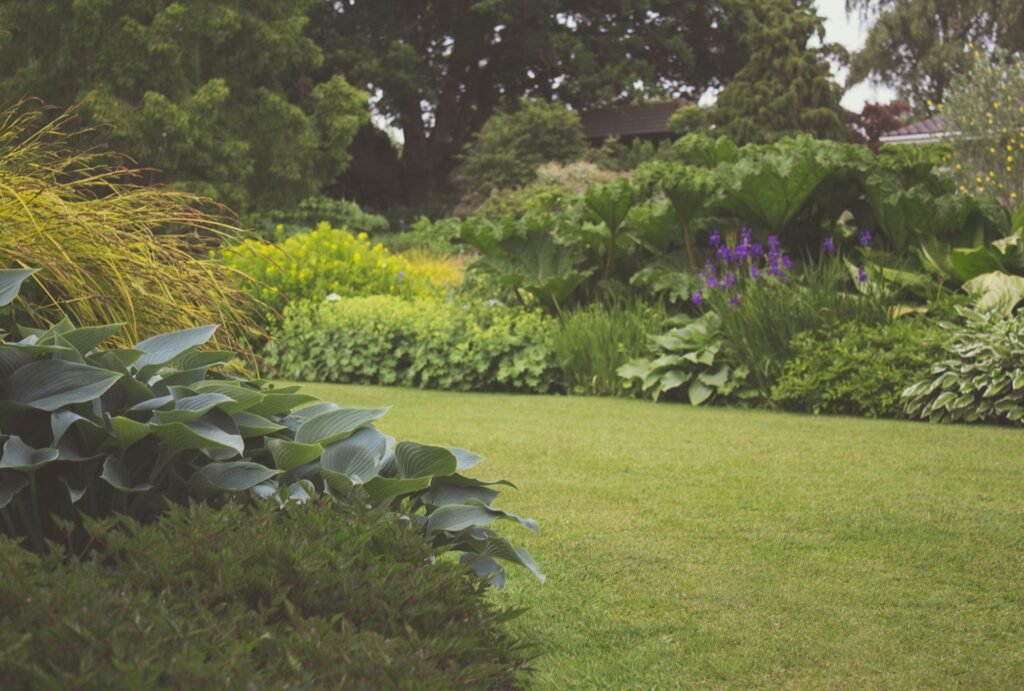Welcome to our guide on the best boundary solutions in New Zealand! Whether you’re looking to enhance your property’s privacy, improve security, or simply add aesthetic appeal, the right boundary solution can make all the difference. In New Zealand, boundary fencing and landscaping are not only about defining your property line but also about ensuring the durability of the materials in our unique climate. From traditional wooden fences to modern glass enclosures, there’s a variety of options to suit different needs, preferences, and budgets. In this guide, we’ll walk you through the top boundary solutions available, offer tips on how to choose the best option for your property, and help you avoid common pitfalls in the decision-making process. Let’s dive into how you can find the perfect boundary solution for your home or business in NZ!
The best boundary solutions in New Zealand depend on your needs for privacy, security, and aesthetics. Popular options include wooden fences for a natural look, metal fences for durability, hedging for an eco-friendly option, and concrete walls for high security. For modern properties, glass fencing offers a sleek design with unobstructed views. Consider local weather, regulations, and your budget when choosing the ideal solution for your property.
Table of Contents
Boundary Solutions: A Key Part Of Property Management
Boundary solutions are a big part of property management, they define, protect and enhance the space around your home or land. They are the physical barriers that mark the boundary between your property and the surrounding area, they have functional and aesthetic benefits. Whether you have a rural property or a suburban section in New Zealand, knowing the different types of boundary solutions and what works for different environments is key to making the right choice for you.
What Are Boundary Solutions?
In simple terms boundary solutions are the structures or landscaping elements that define the edges of a property. They serve multiple purposes: they provide privacy, security and protection from the environment, and are aesthetically pleasing. A good boundary solution can enhance the look of a property and increase its value.
In New Zealand boundary solutions are not just about creating barriers. They also reflect the local landscape, climate and cultural norms. The right boundary can complement your property’s design, be practical and meet your needs whether you live in a city, coastal or rural area.
Types of Boundary Solutions
There are many types of boundary solutions, each with its own benefits. Here are a few:
- Fences: Fences are the most obvious boundary solution, available in many materials such as timber, steel and vinyl. Fences are great for privacy and security. In New Zealand timber fences are the most common due to their natural look, but modern steel and aluminum are becoming more popular for their durability and low maintenance.
- Hedges: For a more natural look hedges are an option. Hedges are a living boundary solution that can be shaped to fit your desired level of privacy or aesthetic. They work well for residential properties where a softer more organic look is preferred. In New Zealand native plants such as pōhutukawa or flax can be used to create a vibrant low maintenance hedge that thrives in our climate.
- Walls: Walls, made of materials like stone, brick or concrete, are a solid and long lasting boundary solution. They are often used in more formal or upmarket settings where durability and permanence is required. Walls also provide great noise reduction, so are a good option for properties near busy roads or urban areas.
- Gates and Entryways: Often used in conjunction with fences or walls, gates and entryways are the control point of your property. A good gate not only adds security but also enhances the overall look of your boundary solution.
- Living Walls or Green Walls: This is a new solution that combines the benefits of a fence and a hedge. Green walls use climbing plants or vertical gardens to create a beautiful eco friendly boundary. They are becoming more popular in urban areas for both privacy and aesthetic value.
Why Boundary Solutions Are Important in New Zealand’s Climate and Landscape
New Zealand’s climate and landscape make the choice of boundary solutions critical. Factors such as coastal conditions, rural versus urban and the local environment all play a big part in determining the best option for your property.
- Coastal Conditions: Properties near the coast face harsh environmental conditions, saltwater and high winds. Materials like treated timber or metal fences are often used for their ability to withstand the corrosive effects of salt and the constant pounding of coastal winds. Hedges with hardy salt tolerant plants like pōhutukawa can also be used as a natural windbreak to protect your property from erosion.
- Rural vs. Urban Needs: In rural New Zealand boundary solutions are often about practicality, livestock containment or sheltering crops from wind. Post and wire fences are common in farming and large properties. In urban areas privacy, aesthetics and security are the priority, where solid timber, brick walls and hedges are more common. Urban areas also have more regulations around boundary solutions so careful planning is required to ensure compliance with local zoning and building codes.
- Weather Conditions: New Zealand has a wide range of weather conditions, from tropical rain in the north to the cooler more temperate south. Your boundary solution needs to be able to withstand New Zealand’s varied weather, rain, snow and high winds. Choosing materials and plants that can cope with these conditions will ensure your boundary remains functional and durable.
- Wildlife Protection: New Zealand has a range of native wildlife, birds, insects and small mammals. Depending on where you live a boundary solution may need to be designed to keep pests out of your garden or to provide a safe haven for native species. For example a native hedge can provide habitat for birds and insects and promote biodiversity.
In New Zealand boundary solutions are more than just physical barriers; they are part of managing your property’s functionality, aesthetics and protection. Whether you choose fences, hedges, walls or other options the right boundary solution will enhance the value and privacy of your property and provide practical benefits based on New Zealand’s climate and landscape. Whether you have a rural property or live in the heart of the city understanding the role of boundary solutions and choosing the right one will ensure your property lasts the test of time, weather and the changing needs of your lifestyle.
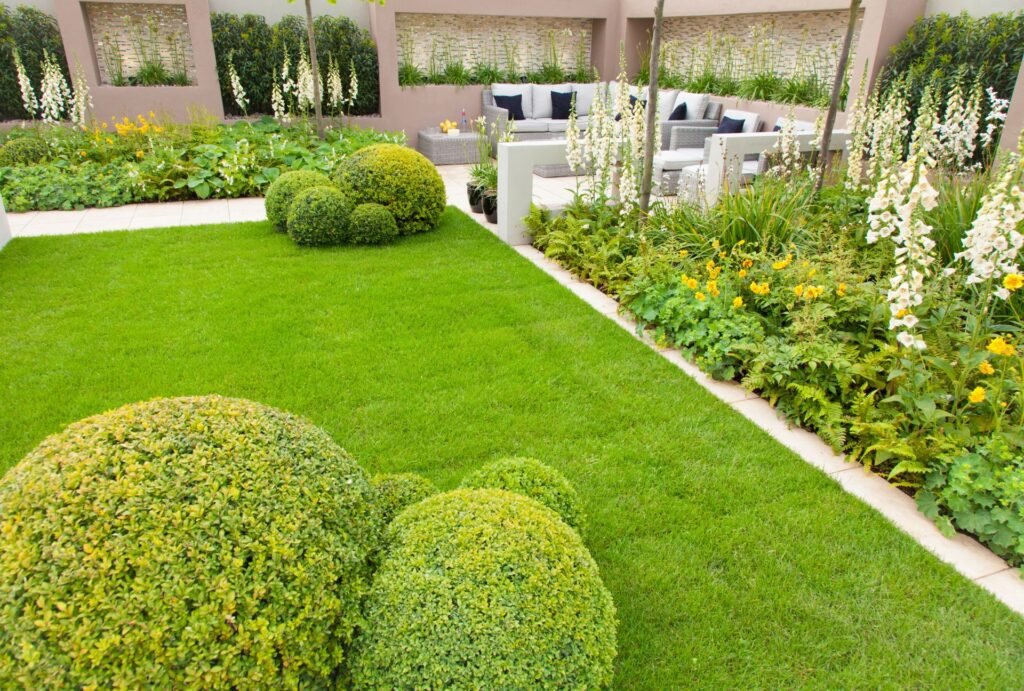
Why Boundary Matters
Choosing the right solution for your boundary landscaping is key for many reasons. Whether you want to increase privacy, security, reduce noise or simply define your property boundaries, the right solution makes all the difference. A good boundary can not only improve the look and feel of your property but also serves practical purposes that affect your daily life.
Privacy
One of the main reasons homeowners and property owners look for boundary solutions is to create privacy. In urban and suburban areas where houses are so close together, a solid fence, hedge or wall can be a barrier, private from neighbours and passersby. The right boundary can also secure your property by deterring intruders, give you peace of mind and keep pets or children contained. The material and height of the boundary can impact how well these solutions deliver the level of privacy and security you need.
Noise
In many cases boundary solutions can also help with noise reduction, especially if your property is near a busy road, railway line or other noise sources. Certain types of fences such as solid wooden or masonry barriers can block or absorb sound and create a quieter environment. Soundproofing materials and design considerations like height and density will vary depending on the type of noise you want to block and the area you want to protect.
Legal Considerations NZ
In New Zealand you need to be aware of the legal considerations when installing a boundary solution. Fences, walls and hedges have different regulations depending on the local council and zoning so it’s best to check with your local authorities before you make any decisions. For example there are rules around the maximum height of fences or walls in residential areas. In some cases you may need to apply for resource consent if you plan to build a fence higher than the allowed height or if your project is in a special zone.
Boundary disputes are also common in New Zealand so understanding the legal framework around property boundaries is key. If you and your neighbour have a disagreement about the placement or type of boundary you can follow established processes to resolve the dispute. It’s always best to have a clear and open conversation with your neighbour before you install a boundary especially if the fence is going along a shared boundary. The Property Law Act 2007 has guidelines on shared fences and maintenance responsibilities.
For a full understanding of fencing laws, including neighbor disputes and legal responsibilities, refer to the Fencing Act 1978.
Environmental Factors: Wind, Rain, Soil
New Zealand’s weather can be unpredictable with areas experiencing strong winds, heavy rain and different soil types. When choosing a boundary solution you need to consider how environmental factors will impact the life and functionality of your fence or boundary. For example coastal areas will experience high winds and salt air which can cause some materials like timber to deteriorate faster. Metal or concrete may be more durable in these conditions.
Rain and soil type also play a big part in boundary design. In areas with high rainfall or high soil moisture some materials will warp or rot over time. You need to choose materials that are resistant to the local climate. You also need to consider drainage when you install a boundary as poor water flow can cause erosion or damage to the foundation of your fence.
When planning a boundary landscaping solution consider these environmental factors and the structure will last and do what it’s meant to do. Choosing durable weather resistant materials and proper installation techniques will make your boundary solution more cost effective in the long run.
In summary choosing the right boundary solution is key to your goals whether it’s privacy, security, noise reduction or environmental protection. You also need to consider the legal landscape as New Zealand has specific rules around boundary installations. By considering local conditions, climate and legal requirements you can make an informed decision that will enhance the functionality and life of your property boundaries.
By making informed decisions based on these factors you’ll have a boundary landscaping solution that meets both practical and legal requirements and improves the overall quality and experience of your outdoor space.
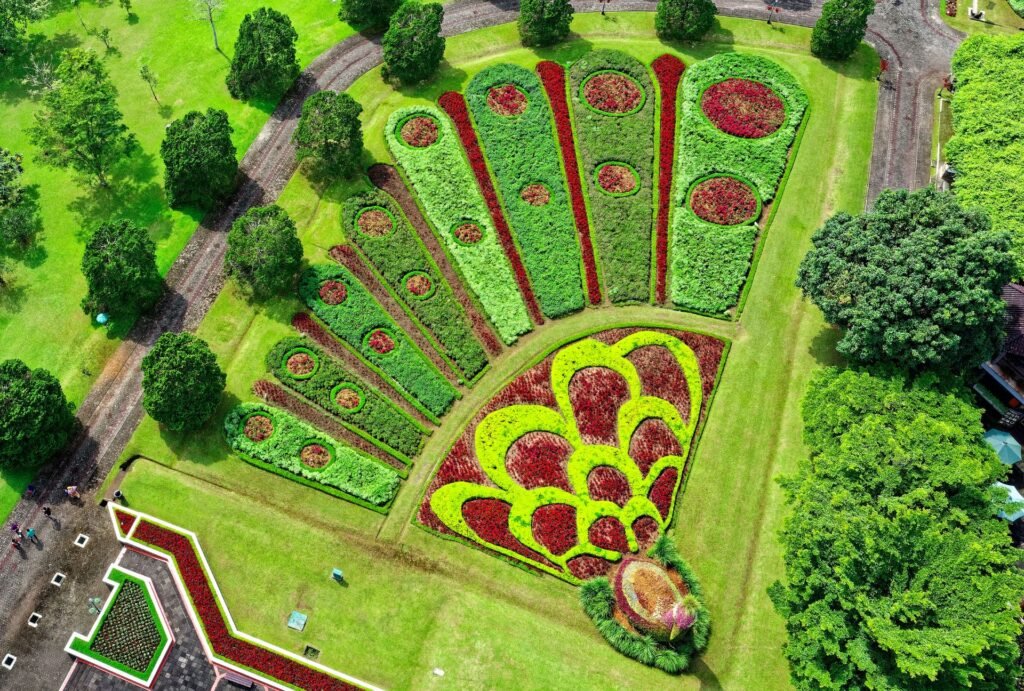
NZ Boundary Options
When deciding on boundary solutions for your NZ property you need to weigh up the pros and cons of each to see which one suits you best. Whether you want privacy, security, aesthetics or a combination of all, there are options to suit different property types and personal tastes. Below is a rundown of the top boundary options in NZ, pros and cons and ideal uses.
Option 1: Wooden Fences
Pros:
Wooden fences are great looking and versatile in design. Available in many styles from picket fences to solid privacy fences, wooden fences can suit different types of architecture and landscaping. The natural warmth and texture of wood adds to the charm of residential properties. Plus they are easy to install making them a cost effective solution for many homeowners.
Cons:
One of the biggest drawbacks of wooden fences is the maintenance required to keep them looking good. Over time wood can rot especially in areas with high moisture or rainfall. Regular treatment such as painting or staining is needed to protect the wood from the elements and extend its life. Wooden fences also need repairs more often than other materials due to wear and tear.
Ideal for:
Wooden fences are best for residential properties, especially in rural or semi rural areas where the fence can blend in with the surroundings. They are also good for homeowners who want a customisable boundary solution that fits traditional or rustic style.
Learn more about sustainable timber fencing options from the New Zealand Timber Industry Federation.
Option 2: Metal Fences
Pros:
Metal fences (steel or aluminium) are durable and low maintenance. Unlike wood they don’t rot and can withstand NZ’s weather. Metal fences give a modern sleek look and are great for those who want a long lasting and secure boundary solution.
Cons:
Metal fences are durable but can be more expensive than wood or other materials. Depending on the type of metal used the fence may need a protective coating to prevent corrosion, especially in coastal areas where saltwater can accelerate rust. Without maintenance metal fences can lose their finish and look over time.
Ideal for:
Metal fences are good for properties that need extra security, such as homes or businesses in urban areas or high traffic areas. They are also popular for modern or minimalist properties that want a clean look.
For information on corrosion-resistant metal fencing suitable for New Zealand’s climate, visit Steel Construction New Zealand.
Option 3: Hedging and Greenery
Pros:
Hedging and greenery is a natural boundary solution that blends in with the environment. It’s an eco friendly option that gives you privacy and aesthetic appeal. A well maintained hedge can be a living fence, adding texture and colour to your garden. Hedging is often used to create a softer boundary between properties, making it perfect for nature lovers.
Cons:
One of the biggest drawbacks of hedging is the time it takes for the plants to grow to full height and density. While they are low maintenance, regular pruning and care is needed to keep them looking tidy and to get the best out of them. Some types of hedges can also be prone to pests or diseases which may need attention from time to time.
Ideal for:
Hedging is good for residential properties, especially those with gardens or eco conscious homeowners looking for an eco friendly solution. It’s also good for those who want a boundary that gives privacy and a green look.
Discover native plants that thrive in New Zealand’s climate for hedging at New Zealand Plant Conservation Network.
Option 4: Concrete Walls
Pros:
Concrete walls are strong and secure. They are durable and can withstand harsh weather without wear and tear. Concrete is a secure option for properties that need strong boundaries. Whether you want to increase privacy or safety concrete walls provide a solid impenetrable barrier.
Cons:
The biggest drawback of concrete walls is the cost. Installation can be more expensive than other boundary options especially if you are opting for decorative or reinforced concrete. Some may find concrete too rigid or imposing and can look cold and industrial which may not suit all property types.
Ideal for:
Concrete walls are good for properties that need high security, large estates, businesses or properties in urban areas where security is top priority. They are also good for properties where durability and longevity is key.
Option 5: Glass Fencing
Pros:
Glass fencing gives a sleek modern look that enhances the beauty of any property. Its transparency gives unobstructed views, perfect for properties with scenic views, such as coastal homes or properties with a pool. Glass fences are also durable and weather resistant, a long lasting and stylish boundary solution.
Cons:
The biggest drawback of glass fencing is the cost compared to other materials. Glass fences also need regular cleaning to maintain its look as it can collect dust, fingerprints and water stains. But maintenance is minimal compared to other high end fencing options.
Ideal for:
Glass fencing is good for modern homes, properties with pools or coastal homes where view of the landscape is important. It’s also good for anyone who wants a boundary that is elegant and contemporary with design focus.
Choosing the right boundary solution for your property in New Zealand depends on your needs, preferences and budget. Whether you want aesthetics, security or sustainability there’s a fencing option that will suit you. Consider the pros and cons of each option carefully so you choose a boundary solution that will enhance both the functionality and look of your property. With the right choice your boundary will not only protect your space but also your home’s overall style.
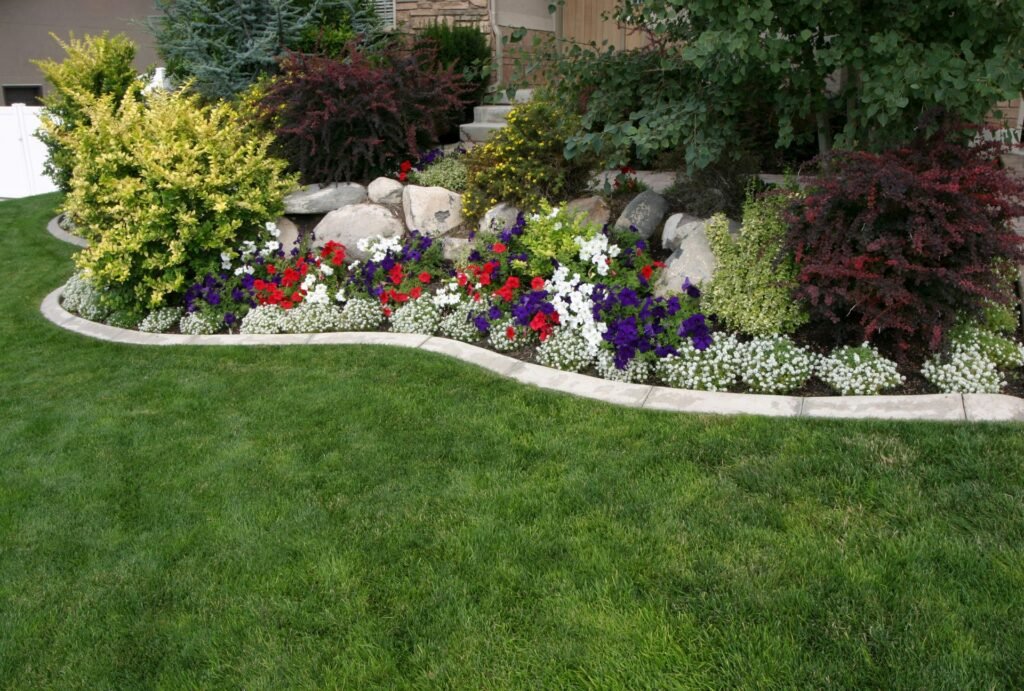
How To Choose The Best Boundary For Your Property
Choosing the right boundary for your property is part of the landscaping design process. Whether you want to increase privacy, aesthetics or security it’s important to choose materials and designs that suit your needs and your property. Here’s a step by step guide to help you make the right choice for your boundaries.
Your Specific Requirements
When choosing a boundary it’s important to think about what it’s for. Are you wanting to block out prying eyes for extra privacy? Or perhaps you’re more concerned with security and keeping intruders out? In some cases it’s to create a visual barrier that matches the overall design of your landscape.
- Privacy: If privacy is your top priority, consider taller fences or hedges that block the view from the outside. Plants like conifers, laurels or bamboo are popular for natural privacy screens. You may also choose solid wood or composite fencing for privacy and a sleek look. Make sure to think about how much coverage you need based on your property layout and surrounding spaces.
- Aesthetics: A boundary also plays a part in the overall look of your property. You want a design that matches the style of your home and the surrounding landscape. For example wrought iron fences can give a traditional or elegant look, timber fences a rustic or modern look. Think about the materials that will blend in with the existing elements of your garden or outdoor space.
- Security: For homes or properties where security is a major concern, a strong high fence or wall with limited access points may be required. Materials like brick, metal or stone can create a strong barrier that provides security and visual appeal. Adding security lighting or gates with locks will also enhance the boundary’s security role.
Local Weather Conditions and Material Durability
The durability of your boundary solution is dependent on the local weather conditions. In New Zealand the weather can vary greatly depending on where you live so it’s important to choose materials that can withstand the elements in your area.
- Weather Resistance: Coastal areas for example have salty air and high humidity so you’ll need to choose materials that are corrosion resistant like treated timber, stainless steel or powder coated metal. Areas with heavy rain or high winds will benefit from materials like concrete, brick or stone that provide more stability and longevity.
- Sunlight and UV Exposure: UV rays can damage some materials over time especially plastic or untreated timber. If you’re in a sunny area consider UV resistant materials or treatments that will preserve the integrity of your boundary solution. Also make sure the plants you choose for hedging can tolerate the amount of sunlight they’ll be getting especially if your property has a lot of sun.
- Climate-Specific Materials: Consider if your area gets extreme weather like storms, flooding or frost. If so then stone walls, metal fencing or robust composite materials might be a good choice as they can withstand harsher conditions. Make sure you choose materials that require minimal maintenance but will be effective all year round.
Local Regulations and Building Codes
Before you decide on your boundary solution make sure to check with local councils and understand the building codes and regulations that apply to your property. This will ensure your new boundary complies with zoning laws and avoids any legal or financial penalties down the track.
- Height Restrictions: Many councils have specific regulations on fence and wall heights especially if you’re near the street or on a shared boundary with a neighbor. Make sure to check these regulations so your new boundary doesn’t exceed the maximum height.
- Boundary Agreements: In some cases you may need to agree with your neighbors on the boundary solution especially if the fence or wall will be shared between properties. Always talk to your neighbors as working together can lead to better solutions and avoid disputes.
- Building Materials: Some materials may be restricted due to environmental or safety concerns. Also regulations may apply to certain treatments for wood or height of structures in fire prone areas. Check local regulations to avoid costly changes or fines down the track.
Cost: Budget and Maintenance
Budget is often the deciding factor in choosing the right boundary solution for your property. Make sure you factor in the total cost including installation and long term maintenance.
- Initial Cost: The materials you choose, the size of the boundary and the complexity of installation will determine the upfront cost. Timber and wire fences are generally cheaper while materials like stone, brick or metal can be more expensive. Be realistic about how much you can afford and whether the more expensive options are worth the extra cost based on their longevity and aesthetics.
- Maintenance Costs: Some materials require more maintenance than others. For example timber fences may need to be stained or treated periodically to prevent rot while metal or stone fences are low maintenance. If you want a boundary solution that won’t require much effort then consider materials that are durable and weather resistant. Also factor in the cost of upkeep such as repairs from storm damage or general wear and tear over time.
- Long-Term Value: Think about the long term value your boundary will add to your property. A well maintained boundary solution will enhance the curb appeal of your home, privacy and security. Sometimes spending a little more upfront can save you money on repairs or replacements down the track so your boundary solution will serve you well for years to come.
Choosing the right boundary solution for your property involves considering many factors from privacy and aesthetics to weather conditions, regulations and budget. By weighing up these factors you can choose a solution that meets your current needs and enhances your property’s functionality and value for the long term. Remember a well chosen boundary will improve your outdoor space’s beauty and security and benefit your home and family for years to come.
Check your local council’s guidelines for specific fencing rules in your area. You can find council regulations on the New Zealand Government website.
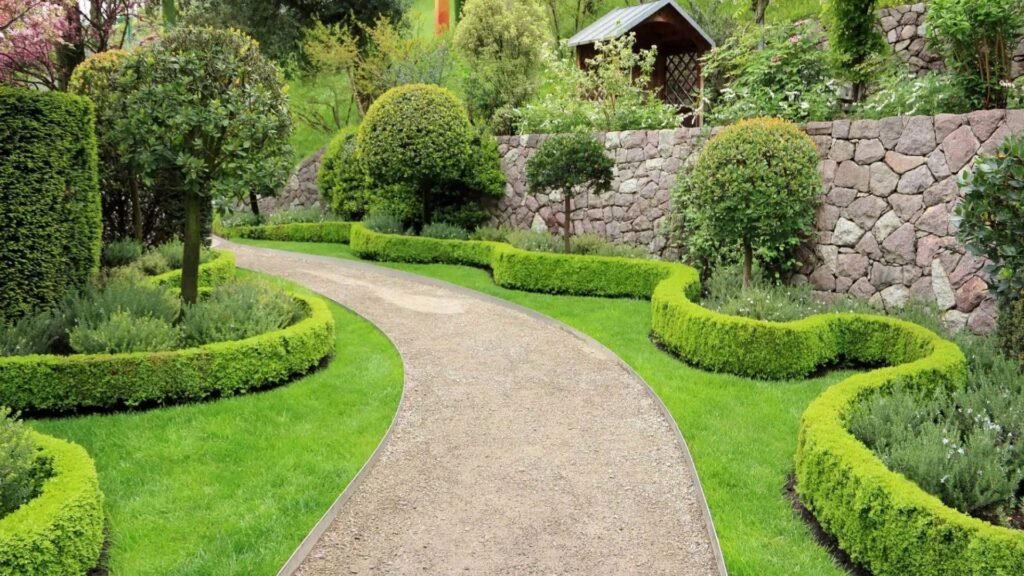
Don’t Make These Mistakes When Choosing Your Boundary Options
Choosing the right boundary options for your land is a big decision that affects not only the look of your outdoor space but also its functionality and long term maintenance. Unfortunately many people make common mistakes when selecting boundary features and it can cost you repairs, time and legal headaches. Let’s look at the most common mistakes people make when choosing boundary solutions for their landscaping.
Not Thinking About Maintenance
Boundary solutions like fences, hedges and walls may look great initially but many people forget about the long term maintenance required to keep them looking their best. Different boundary materials have different levels of durability and some require more maintenance than others. For example timber fences may need to be painted or stained regularly to protect them from the elements while stone walls may require less maintenance but can wear due to weather or shifting soil.
When choosing a boundary solution you need to think about how much time, effort and money you are willing to put into maintaining it. High maintenance options may look great but can be a hassle if you don’t have the time or resources to maintain them. Low maintenance options may save you time and money in the long run. Always factor in the climate of your area, how much exposure the boundary will have to the elements and are you willing to commit to ongoing care.
Only Focusing on Aesthetics and Ignoring Durability
It’s easy to get caught up in the look of boundary solutions especially when you’re designing your garden or outdoor space. While aesthetics are important, durability should be number one. Focusing only on how a boundary looks without evaluating its ability to withstand environmental stressors – wind, rain, UV exposure – can lead to premature wear and tear.
For example a stylish wooden fence may look great at first but may not be the best option for areas prone to high winds or heavy rain. A decorative metal fence may rust over time if not properly treated. Consider the long term durability of your boundary choice and weigh it against the lifespan of the materials. You need to strike a balance between aesthetics and durability so your investment lasts.
Not Considering Legal and Regulatory Factors
One of the most common mistakes when choosing boundary solutions is ignoring the legal and regulatory requirements that apply to your property. In many cases local councils and zoning laws dictate what boundaries you can build, how tall they can be and where they can be placed. Not checking these regulations can result in fines, removal of the boundary or disputes with your neighbours.
Before you install any boundary solution you need to understand the local rules that apply to your property. This may include height restrictions, material limitations and specific guidelines for boundaries that adjoin public or shared spaces. Some boundary solutions may require permits especially if they are considered major structures like walls or large fences. Consulting your local council or a professional can save you from costly mistakes and legal issues.
Not Consulting a Professional When You Should
While many DIY enthusiasts love to design and build their own boundary solutions, there are times when you should consult a professional. Boundary landscaping involves technical aspects like structural integrity, soil conditions and drainage. For example a fence not properly anchored may lean or fall over in strong winds or a hedge planted in poor soil may not grow as expected.
Hiring a landscaper or boundary specialist can help you navigate these complexities and ensure your boundary solution meets your needs now and in the future. Professionals can give you valuable insights into the best materials for your property, help with legal requirements and provide guidance on installation techniques. Even if you decide to do the installation yourself, consulting a professional first can save you costly mistakes and time in the long run.
So by not making these mistakes you’ll have a boundary solution that adds to your property’s beauty and functionality without the hassle and expense. Whether you focus on aesthetics, durability or maintenance you’ll be rewarded with a boundary solution that will last for years.
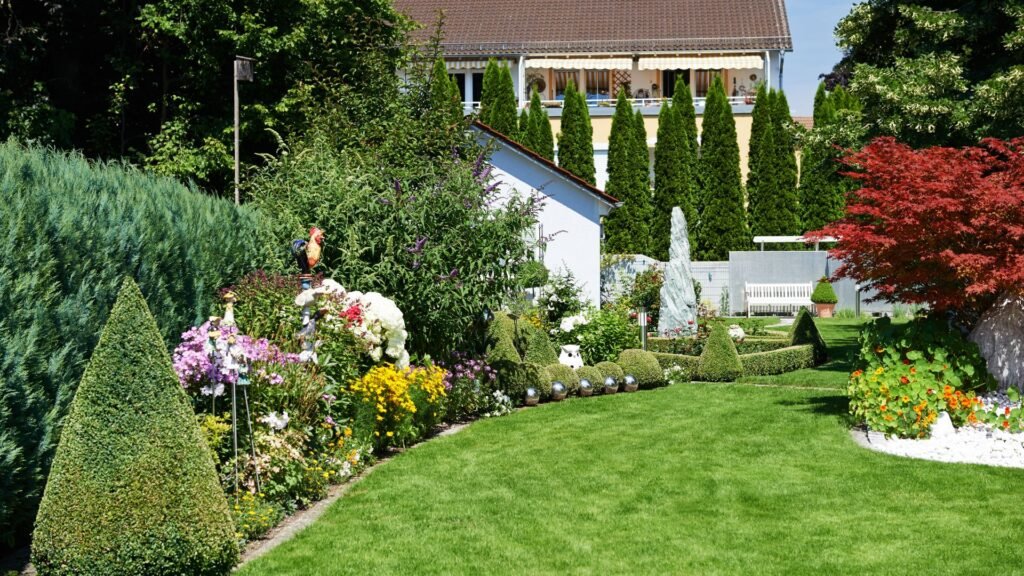
Professional Install Vs DIY Boundary Solutions
When it comes to boundary landscaping solutions one of the biggest decisions you have to make is whether to hire a professional or do it yourself (DIY). Both have their pros and cons so it’s important to understand the benefits of each so you can make an informed decision. This section will cover the pros and cons of professional install vs DIY for boundary solutions, and when to hire a contractor and a quick look at DIY resources if you decide to go down the DIY route.
Professional Install Benefits
- Expertise and Experience
Landscapers or contractors bring expertise and experience to the table. They know the local climate, plant species and boundary regulations so your project gets done right the first time. They are skilled in designing and installing boundary solutions that meet your aesthetic goals and provide long term durability and functionality. - Time Efficiency
Installing boundary solutions, especially complex ones like retaining walls, fences or hedges can be time consuming. Hiring a professional saves you a lot of time and effort so you can focus on other parts of your home or garden. With access to specialized tools and equipment professionals can often do the job much quicker than a DIYer could. - Compliance with Regulations
New Zealand has specific laws and regulations around boundary fencing and landscaping especially around height restrictions, neighbour consent and environmental factors. Professionals know these rules and will ensure your project meets all local requirements so you don’t get fined or have to make costly changes later. - Guaranteed Results and Warranty
A reputable contractor will usually offer a warranty on their work so you have peace of mind knowing if something goes wrong it will be fixed without extra cost. This is a big advantage especially for larger or more complex installations. - Complex Installations
For more complex boundary solutions – like custom gates, high fences or elaborate landscaping features – it’s often worth hiring a professional. These types of installations require specialized knowledge, tools and the ability to manage difficult tasks like excavation, heavy lifting and precise installation. If the design involves advanced techniques or materials professional input will ensure a high quality result that would be hard for a DIYer to achieve.
When to Hire a Contractor
While DIY is a great option for many boundary landscaping projects, there are times when hiring a professional is the way to go. Here are a few scenarios when to hire a contractor:
- Complex Designs: If you have a design with intricate elements like mixed materials (e.g. a stone wall with a timber fence) or structural elements like retaining walls or drainage systems, professionals will ensure the installation is stable, secure and looks good.
- Legal and Safety Requirements: Some boundary solutions especially those that involve height restrictions (like privacy fences or boundary walls) may have legal requirements that need permits or neighbour consent. A professional contractor knows these rules and can deal with them for you.
- Time Critical: If you’re on a tight deadline or want the job done quickly, professionals can get the job done faster. They have the tools and manpower to get the job done within a set timeframe.
- Difficult Terrain: Installing boundaries on tricky terrain like steep slopes, rocky soil or uneven ground can be challenging for DIYers. Professionals are used to dealing with these conditions and have the equipment and expertise to do the job.
DIY Boundary Solutions: Tools
For homeowners who want to go DIY there are many resources and tools to help you along the way. DIY boundary projects can be very rewarding and cost effective. Some common DIY boundary solutions are simple fencing, garden hedging and small retaining walls.
Tools and Equipment for DIY Installation
- Post Hole Digger or Auger: For setting fence posts in the ground.
- Level and Measuring Tape: To make sure your fence or boundary feature is straight.
- Power Drill and Screws: For assembling pre-fabricated fencing or other boundary materials.
- Shovels and Spades: For digging and preparing the ground.
- Concrete Mixer: For larger fence installations like concrete posts.
DIY Resources
There are many online tutorials, videos and landscaping blogs that have step by step guides for DIY boundary landscaping projects. You can find information on everything from choosing materials to installation techniques for different types of fences, gates and garden boundaries. Many garden centres or hardware stores also have in-store or online advice for DIYers looking for tips on boundary installation.
Whether to go professional or DIY for boundary solutions ultimately comes down to the scale and complexity of the project and your own skills and time. While a contractor will give you professional results and comply with regulations, DIY is a great option for simpler boundary solutions. Whatever you choose make sure you consider your goals, budget and expertise before you decide so your boundary landscaping project is a winner.
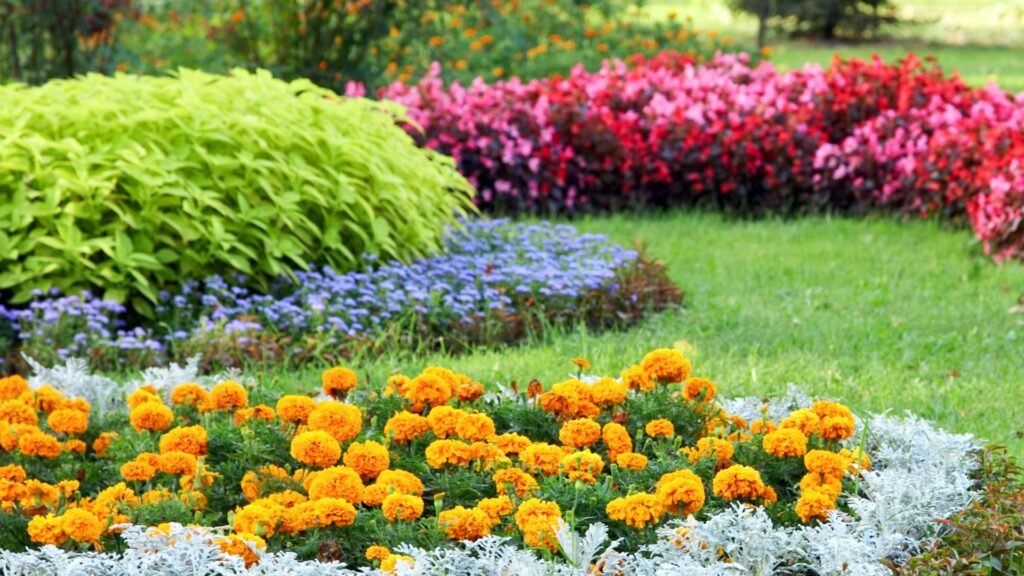
FAQs: About Best Boundary Solutions NZ
What are the best boundary solutions for privacy in New Zealand?
Wooden fences and hedges are popular options for creating privacy. Wooden fences offer a solid, traditional look, while hedges provide a natural, green barrier. Both options can effectively block out views from neighboring properties.
How do I choose the best boundary solution for my property?
Consider your needs for privacy, security, and aesthetics. Think about the climate in your area (e.g., coastal or rural conditions) and check local regulations. Your budget, maintenance requirements, and the overall style of your property will also influence your decision.
What is the most cost-effective boundary solution in NZ?
Wooden fences are often one of the most cost-effective options for boundary solutions. They provide a good balance of privacy and aesthetic appeal without breaking the bank. However, the cost can vary based on wood type and installation complexity.
Are metal fences a good option for boundary solutions in New Zealand?
Yes, metal fences are a great option for those seeking durability and low maintenance. They are resistant to harsh weather conditions and can provide a modern, sleek look. However, they can be more expensive than other materials.
How do I maintain a wooden fence?
Wooden fences require regular maintenance to prevent rot and damage from moisture. You should clean the fence periodically, check for any signs of decay, and treat it with weather-resistant stains or oils. Repainting or resealing may be necessary every few years.
What are the advantages of using hedges for boundary solutions?
Hedges are a natural and eco-friendly option for boundary solutions. They offer privacy, noise reduction, and can enhance the overall appearance of your garden. However, they require more time and effort to grow and maintain compared to fences or walls.
Can glass fencing be used for privacy?
Glass fencing is ideal for properties where you want to maintain unobstructed views, such as around pools or along coastal properties. While it doesn’t provide as much privacy as a solid fence or hedge, it offers a modern and elegant solution, especially when paired with screens or frosted glass.
Do I need a permit to install a boundary fence in New Zealand?
Yes, depending on your location and the type of fence you wish to install, you may need to apply for a permit. Local regulations often dictate fence height, materials, and placement, particularly when it comes to boundary disputes with neighbors. Always check with your local council.
What’s the lifespan of a concrete boundary wall?
Concrete walls are incredibly durable and can last for several decades when properly maintained. They offer long-term security and strength, making them a great option for high-security needs. However, they tend to be more expensive upfront compared to other materials.
Is it better to hire a professional to install my boundary solution?
If you have a complex property layout or need to adhere to specific regulations, hiring a professional installer is recommended. They can ensure proper installation, handle permits, and help you choose the best materials for your needs. For simple DIY projects, many homeowners choose to install wooden fences or hedges themselves.
Conclusion
Choosing the right boundary is key to a functional and beautiful outdoor space. Whether you want privacy, security or to define your property, the options – fences, hedges, walls and natural landscaping – all have their benefits. Consider the local climate, property size, budget and what you want your boundary to do. By working out what you need you can make a better informed decision that will enhance your garden or yard. Talk to experts or local suppliers and they will give you valuable advice and help you find the best solution for you.



